#Milky Way's black hole
Photo

Sagittarius A*
55 notes
·
View notes
Text

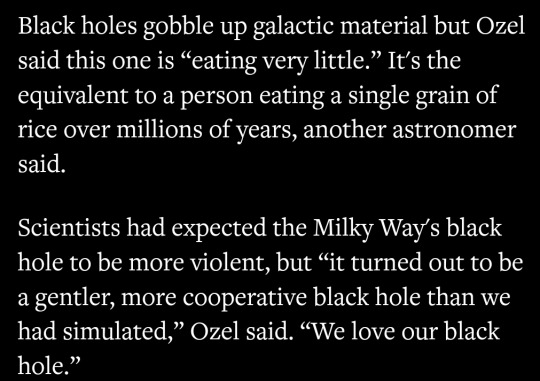
"We love our black hole"
13K notes
·
View notes
Text

"Milky Way black hole"
The Event Horizon Telescope (EHT) collaboration, who produced the first ever image of our Milky Way black hole released in 2022, has captured a new view of the massive object at the center of our Galaxy: how it looks in polarized light.
This is the first time astronomers have been able to measure polarization, a signature of magnetic fields, this close to the edge of Sagittarius A*.
This image shows the polarized view of the Milky Way black hole. The lines mark the orientation of polarization, which is related to the magnetic field around the shadow of the black hole. Image
Photo: EHT Collaboration, CC-BY-NC-SA
#art#cosmos#cosmic#universe#blast#space#photography#milky way#black hole#eht#polarization#sagittarius A*
92 notes
·
View notes
Text
Astronomers identified the largest stellar black hole yet discovered in the Milky Way, with a mass 33 times that of the Sun, according to a study published on Tuesday.
The black hole, named Gaia BH3, was discovered "by chance" from data collected by the European Space Agency's Gaia mission, an astronomer from the National Centre for Scientific Research (CNRS) at the Observatoire de Paris, Pasquale Panuzzo, told AFP.
Gaia, which is dedicated to mapping the Milky Way galaxy, located BH3 2,000 light years away from Earth in the Aquila constellation.
Continue Reading.
87 notes
·
View notes
Text
Our Weird and Wonderful Galaxy of Black Holes
youtube
Black holes are hard to find. Like, really hard to find. They are objects with such strong gravity that light can’t escape them, so we have to rely on clues from their surroundings to find them.
When a star weighing more than 20 times the Sun runs out of fuel, it collapses into a black hole. Scientists estimate that there are tens of millions of these black holes dotted around the Milky Way, but so far we’ve only identified a few dozen. Most of those are found with a star, each circling around the other. Another name for this kind of pair is a binary system.That’s because under the right circumstances material from the star can interact with the black hole, revealing its presence.
The visualization above shows several of these binary systems found in our Milky Way and its neighboring galaxy. with their relative sizes and orbits to scale. The video even shows each system tilted the way we see it here from our vantage point on Earth. Of course, as our scientists gather more data about these black holes, our understanding of them may change.
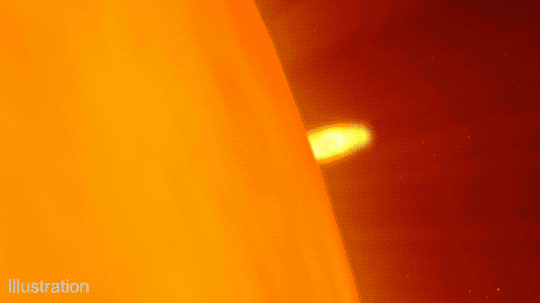
If the star and black hole orbit close enough, the black hole can pull material off of its stellar companion! As the material swirls toward the black hole, it forms a flat ring called an accretion disk. The disk gets very hot and can flare, causing bright bursts of light.
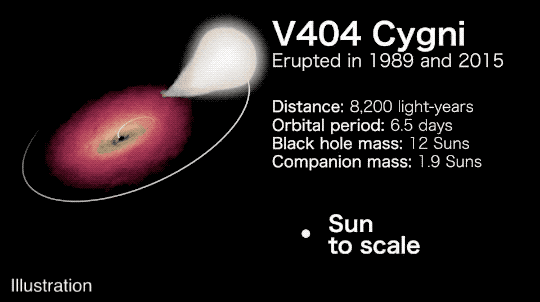
V404 Cygni, depicted above, is a binary system where a star slightly smaller than the Sun orbits a black hole 10 times its mass in just 6.5 days. The black hole distorts the shape of the star and pulls material from its surface. In 2015, V404 Cygni came out of a 25-year slumber, erupting in X-rays that were initially detected by our Swift satellite. In fact, V404 Cygni erupts every couple of decades, perhaps driven by a build-up of material in the outer parts of the accretion disk that eventually rush in.
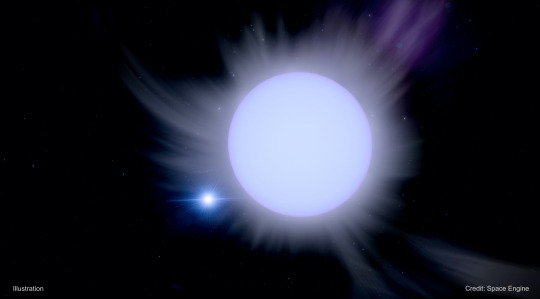
In other cases, the black hole’s companion is a giant star with a strong stellar wind. This is like our Sun’s solar wind, but even more powerful. As material rushes out from the companion star, some of it is captured by the black hole’s gravity, forming an accretion disk.
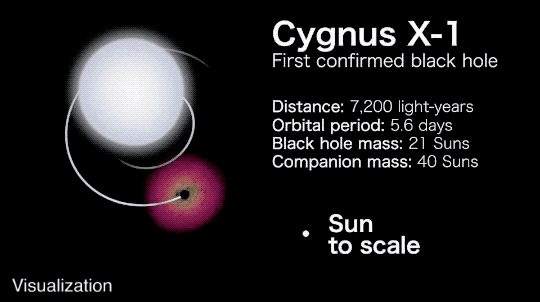
A famous example of a black hole powered by the wind of its companion is Cygnus X-1. In fact, it was the first object to be widely accepted as a black hole! Recent observations estimate that the black hole’s mass could be as much as 20 times that of our Sun. And its stellar companion is no slouch, either. It weighs in at about 40 times the Sun.

We know our galaxy is peppered with black holes of many sizes with an array of stellar partners, but we've only found a small fraction of them so far. Scientists will keep studying the skies to add to our black hole menagerie.
Curious to learn more about black holes? Follow NASA Universe on Twitter and Facebook to keep up with the latest from our scientists and telescopes.
Make sure to follow us on Tumblr for your regular dose of space: http://nasa.tumblr.com
#NASA#space#science#black holes#universe#astrophysics#milky way#stars#black hole week#Youtube#spaceblr#astronomy#data visualization
2K notes
·
View notes
Text
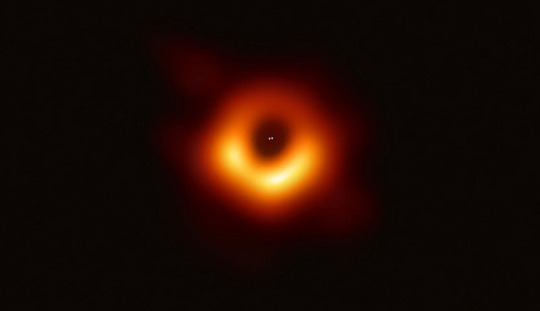

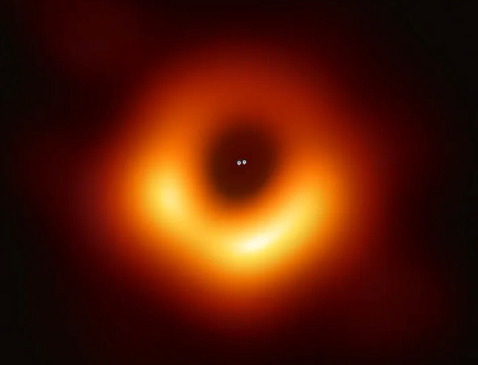
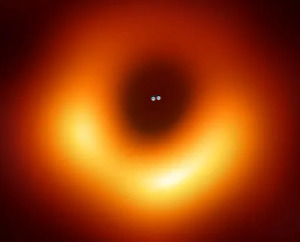
Danno is Watching
42 notes
·
View notes
Text
41 notes
·
View notes
Text

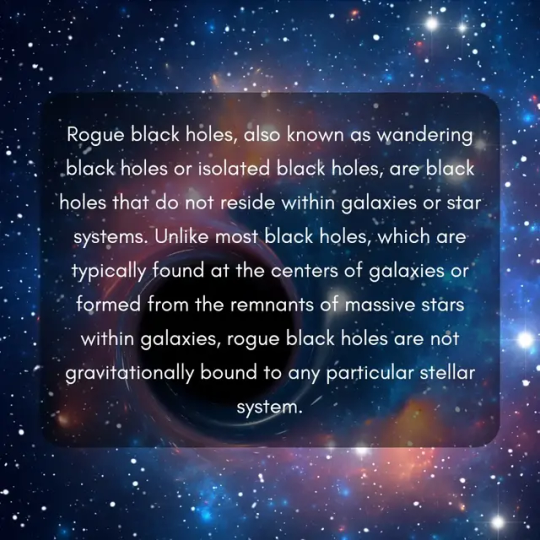
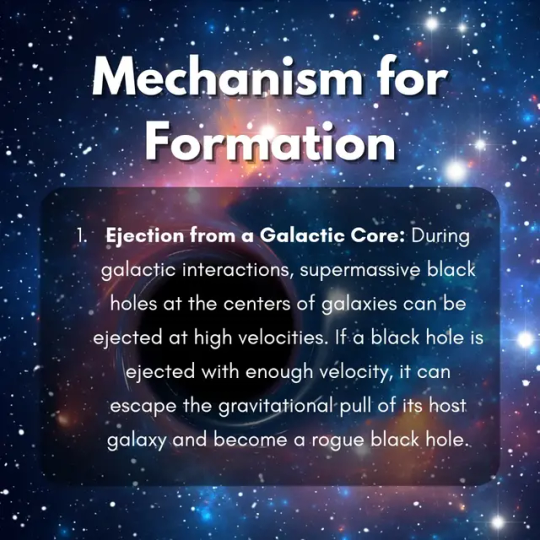
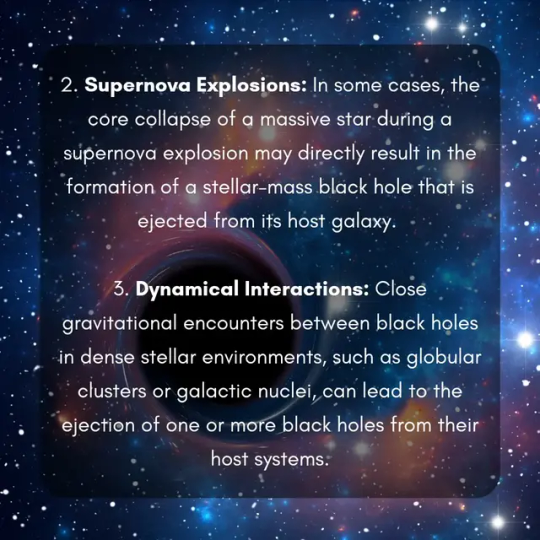


Lost in space? 🌌 Rogue black holes wander the cosmos, untethered to galaxies! 🕳️ ➡️ Swipe to learn more about these mysterious nomads of the universe! 🚀🔭
#black holes#gravity#galaxy#universe#space science#outer space#space#milky way#astronomers#astrophotography#astrophysics#astronomy#astro community#astro#cosmos#cosmology#cosmic#cosmic chatter#cosmic horror#physics#science#science facts#astro blog#education#discover#scicomm#study blog#studyblr#explore#simps for science
52 notes
·
View notes
Text

First of all, A+++++++ caption and reference.
Second: Holy shit this sound fucked me up no thanks nope I’m out
1K notes
·
View notes
Text
2024 March 13
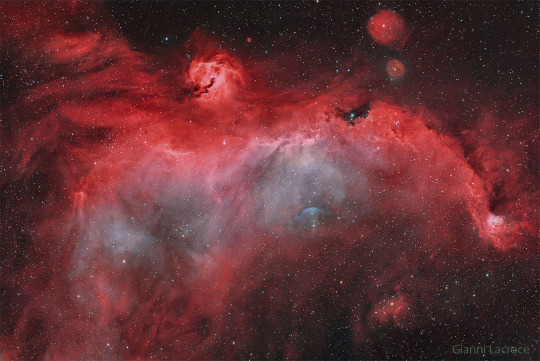
A starfield features a large nebula, mostly red, partly blue, which seems to have the shape of a bird.
The Seagull Nebula
Credit & Copyright: Gianni Lacroce
Explanation: A broad expanse of glowing gas and dust presents a bird-like visage to astronomers from planet Earth, suggesting its popular moniker: the Seagull Nebula. This portrait of the cosmic bird covers a 1.6-degree wide swath across the plane of the Milky Way, near the direction of Sirius, the alpha star of the constellation of the Big Dog (Canis Major). Of course, the region includes objects with other catalog designations: notably NGC 2327, a compact, dusty emission and reflection nebula with an embedded massive star that forms the bird's head. Dominated by the reddish glow of atomic hydrogen, the complex of gas and dust clouds with bright young stars spans over 100 light-years at an estimated 3,800 light-year distance.
#astronaut#astronomers#not astrology#star#stars#astronomy#outer space#space#ton618#nebula#nebulas#astro observations#astrophysics#black holes#red#bird#seagull#Milky way
25 notes
·
View notes
Text
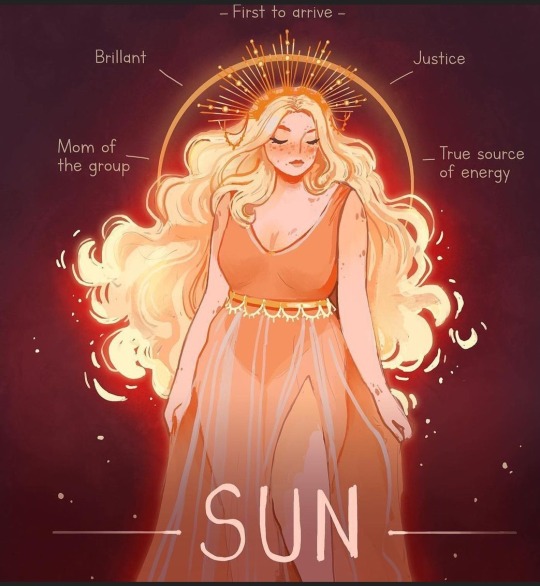





63 notes
·
View notes
Text
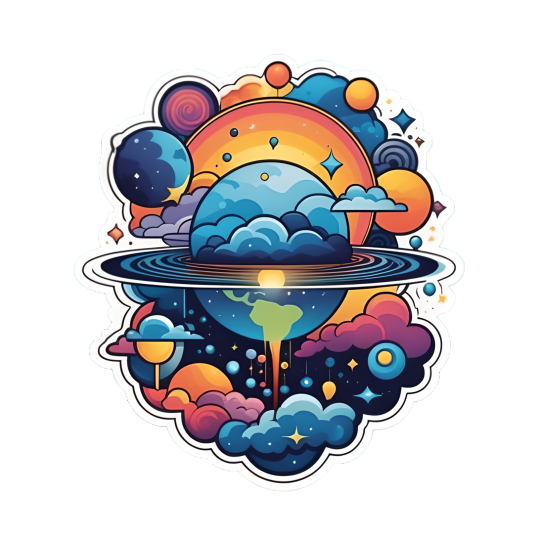
#black holes#black hole#cosmic#space#outer space#stickers#galaxy#galaxies#stars#planets#milky way#night#sky#skyscape#inner child#kidcore#sticker#childhood#clouds#art
12 notes
·
View notes
Text

Sgr A*, situated in the heart of the Milky Way, 27,000 light-years distant from Earth. This marks the first instance of observation in polarized light, unveiling the presence of robust and structured magnetic fields emanating in a spiral pattern from the periphery of Sgr A*.
10 notes
·
View notes
Photo

Mysterious gamma-ray emitting bubbles around the center of our Galaxy explained A scientist from Tokyo Metropolitan University has shown that large gamma-ray emitting bubbles around the center of our Galaxy were produced by fast blowing outward winds and the associated “reverse shock.” Numerical simulations successfully reproduced the temperature profile observed by an X-ray telescope. Such outflows have been observed in other galaxies; this finding suggests similar winds may have been blowing in our own Galaxy until quite recently. The universe is full of massive celestial objects which are yet to be explained. One of these are the “Fermi bubbles,” so-called because they were first discovered by the Fermi Gamma-ray Space Telescope in 2010. These bubbles are enormous gamma-ray emitting regions which extend either side of the center of our Galaxy over approximately 50,000 light years, protruding out from the plane of the Galaxy like balloons as shown in the figure. Despite their mind-blowing scale, the mechanism by which they are formed is yet to be deciphered. Now, Professor Yutaka Fujita from Tokyo Metropolitan University has presented theoretical evidence demonstrating how such objects may have been formed. Since their discovery, many hypotheses have been put forward about the formation of the Fermi bubbles, including an explosive activity of the central supermassive black hole, winds from the black hole, and steady star formation activity. Telling these scenarios apart is a challenging task, but the availability of state-of-the-art X-ray observations from the Suzaku satellite gives us a chance to compare measurements with what we expect from various scenarios. The simulations of Professor Fujita considered fast outflowing winds from the black hole injecting the necessary energy into the gas surrounding the center of the Galaxy. Comparing with the measured profiles, they found that there was a good chance that the Fermi bubbles are produced by the fast outflowing winds, blowing at 1000km per second over 10 million years. These are not winds as we would experience them on earth, but streams of highly charged particles traveling at high speeds and propagating through space. These winds travel outwards and interact with surrounding “halo gas,” causing a “reverse shock” that creates a characteristic temperature peak. The Fermi bubbles correspond to the volume on the inside of this reverse shock front. Importantly, simulations also showed that an instantaneous explosion at the center could not reproduce the profiles measured by the telescope, lending weight to a scenario based on steady winds generated by the central black hole. The author notes that the winds predicted by the simulation are similar to outflows observed in other galaxies. The correspondence suggests the same kinds of massive outflows seen in other parts of the universe were present in our own Galaxy until fairly recently. IMAGE....Fast winds flowing out from the Galactic center creates a forward shock and a reverse shock. The latter forms the outline of the Fermi bubbles. CREDIT Tokyo Metropolitan University
88 notes
·
View notes
Text


Here are the villains if they were ever given designs in MW&GG, Black Hole and Supernova.
Black Hole, a sinister wizard locked away for her crimes against humanity suddenly released by an unsuspecting victim to accomplish her plan of sucking everything in her pocket dimensions for her own selfish gain.
She was a master trickster back in the day akin to the Nordic god Loki, everything that goes missing ends up in her dimension.
Supernova, a jaded fashionista ridden with jealousy of Aurora Borealis's success.
Her explosive temper and ability to blast her opponents out of the water definitely doesn't garner her many friends.
Her befriending Black Hole as a way to get even with Aurora and the Galaxy Girls was only for her own selfish needs, not because she's lonely.
She tires of Black Hole's fruitless mind games, patience is not a word in her vocabulary.
#milky way and the galaxy girls#milky way and the galaxy girls black hole#milky way and the galaxy girls supernova#black hole#supernova
17 notes
·
View notes
Text

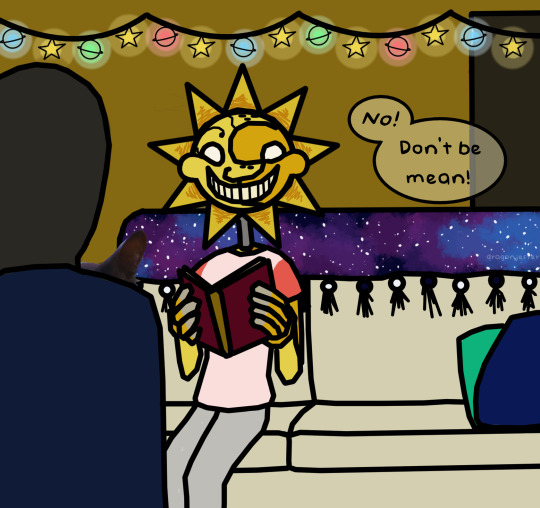


Moon looked at the cat placed in front of him. The cat stared right back, unblinking.
“It’s cute enough. But we’ve got other animals to take care of.” Moon told Sun, who had slid his fingers together in a pleading gesture halfway through Moon’s almost-rejection, already prepared with a rebuttal, no doubt.
“Oh, Moony, come on! The poor thing’s been visiting for weeks, and no one’s come to claim him.”
Moon once again eyed the cat as it settled down and tucked its paws underneath itself. It met Moon’s gaze and offered an inquisitive “mrrp?”
He sighed. “Fine. You’re taking majority care, though. You know I’m not a fan of cats.”
And yet despite this claim and Sun’s eager response, it wasn’t Sun sewing little toys filled with catnip and bells for the cat, he wasn’t the one that started the afternoon ritual taking warm naps with it, and he wasn’t the one singing it lullabies as he carefully trimmed its claws on the comfiest cat bed money could buy (even if it did prefer any old cardboard box, the ingrate.) Yet despite this total change of heart, Moon would always stubbornly deny, if questioned, his love for “that beast.”
Art based on this.
#sundrop x reader#moondrop x reader#sun fnaf#moon fnaf#writing#i did an art everyone#its been 87 years...#the cat's name is sagittarius named after the milky ways black hole#sage for short#post sywsar like years after you lot have loads of animals#oh and the fern's name is ferngus#but yeah moon's that dad that says no to every animal brought home#days later the animal's getting absolutely spoiled rotten#sun's the one who can't be trusted to visit the pet store or shelter because you'll be coming home with five animals
142 notes
·
View notes